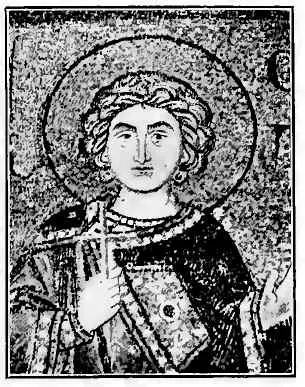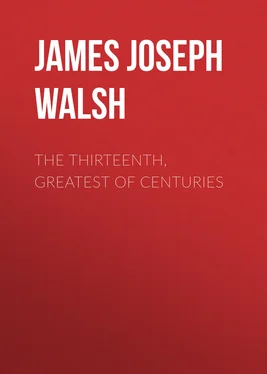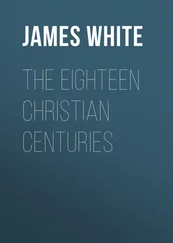James Walsh - The Thirteenth, Greatest of Centuries
Здесь есть возможность читать онлайн «James Walsh - The Thirteenth, Greatest of Centuries» — ознакомительный отрывок электронной книги совершенно бесплатно, а после прочтения отрывка купить полную версию. В некоторых случаях можно слушать аудио, скачать через торрент в формате fb2 и присутствует краткое содержание. Жанр: foreign_prose, История, foreign_edu, foreign_antique, на английском языке. Описание произведения, (предисловие) а так же отзывы посетителей доступны на портале библиотеки ЛибКат.
- Название:The Thirteenth, Greatest of Centuries
- Автор:
- Жанр:
- Год:неизвестен
- ISBN:нет данных
- Рейтинг книги:3 / 5. Голосов: 1
-
Избранное:Добавить в избранное
- Отзывы:
-
Ваша оценка:
- 60
- 1
- 2
- 3
- 4
- 5
The Thirteenth, Greatest of Centuries: краткое содержание, описание и аннотация
Предлагаем к чтению аннотацию, описание, краткое содержание или предисловие (зависит от того, что написал сам автор книги «The Thirteenth, Greatest of Centuries»). Если вы не нашли необходимую информацию о книге — напишите в комментариях, мы постараемся отыскать её.
The Thirteenth, Greatest of Centuries — читать онлайн ознакомительный отрывок
Ниже представлен текст книги, разбитый по страницам. Система сохранения места последней прочитанной страницы, позволяет с удобством читать онлайн бесплатно книгу «The Thirteenth, Greatest of Centuries», без необходимости каждый раз заново искать на чём Вы остановились. Поставьте закладку, и сможете в любой момент перейти на страницу, на которой закончили чтение.
Интервал:
Закладка:
In order to show how thoroughly conservative are the numbers in attendance at the universities that I have taken, I shall quote two good recent authorities, one of them Professor Laurie, the Professor of the Institutes and History of Education in the University of Edinburgh, and the other Thomas Davidson, a well-known American authority on educational subjects. Each of their works from which I shall quote has been published or revised within the last few years. Professor Laurie in "The Rise and Early Constitution of the University with a Survey of the Medieval Education," which formed one of the International Educational Series, edited by Commissioner Harris and published by Appleton, said:
"When one hears of the large number of students who attended the earliest universities—ten thousand and even twenty thousand at Bologna, an equal, and at one time a greater, number at Paris, and thirty thousand at Oxford—one cannot help thinking that the numbers have been exaggerated. There is certainly evidence that the Oxford attendance was never so great as has been alleged (see Anstey's 'Mon Acad.'); but when we consider that attendants, servitors, college cooks, etc., were regarded as members of the university community, and that the universities provided for a time the sole recognized training grounds for those wishing to enter the ecclesiastical or legal or teaching professions, I see no reason to doubt the substantial accuracy of the tradition as to attendance—especially when we remember that at Paris and Oxford a large number were mere boys of from twelve to fifteen years of age."
As to the inclusion of servitors, we have already said that many, probably, indeed, most of them, were actual students working their way through the university in these enthusiastic days. Professor Laurie's authority for the assertion that a large number of the students at Paris and Oxford were mere boys, is a regulation known to have existed at one of these universities requiring that students should not be less than twelve years of age. Anyone who has studied medieval university life, however, will have been impressed with the idea, that the students were on the average older at the medieval universities rather than younger than they are at the present time. The rough hazing methods employed, almost equal to those of our own day! would seem to indicate this. Besides, as Professor Laurie confesses in the next paragraph, many of the students were actually much older than at present. Our university courses are arranged for young men between 17 and 22, but that is, to fall back on Herbert Spencer, presumably because the period of infancy is lengthening with the evolution of the race. There are many who consider that at the present time students are too long delayed in the opportunity to get at the professional studies, and that it is partly the consequence of this that the practical branches are so much more taken up under the elective system. As we said in the chapter on Universities and Preparatory Schools, in Italy and in other southern countries, it is not a surprising thing to have a young man graduate at the age of 16 or 17 with his degree of A. B., after a thoroughly creditable scholastic career. This means that he began his university work proper under 13 years of age; so that we must judge the medieval universities to some extent at least with this thought in mind.
Mr. Thomas Davidson in his "History of Education," 7 7 A History of Education, by Thomas Davidson, author of Aristotle and Ancient Educational Ideas. New York: Scribners, 1900.
in the chapter on The Medieval University has a paragraph in which he discusses the attendance, especially during the Thirteenth Century, and admits that the numbers, while perhaps not so large as have been reported, were very large in comparison to modern institutions of the same kind, and frankly concedes that education rose during these centuries which are often supposed to have been so unfavorable to educational development, to an amazing height scarcely ever surpassed. He says:
"The number of students reported as having attended some of the universities in those early days almost passes belief; e. g. Oxford is said to have had thirty thousand about the year 1300, and half that number even as early as 1224. The numbers attending the University of Paris were still greater. These numbers become less surprising when we remember with what poor accommodations—a bare room and an armful of straw—the students of those days were content, and what numbers of them even a single teacher like Abelard could, long before draw into lonely retreats. That in the Twelfth and following centuries there was no lack of enthusiasm for study, notwithstanding the troubled condition of the times, is very clear. The instruction given at the universities, moreover, reacted upon the lower schools, raising their standard and supplying them with competent teachers. Thus, in the Thirteenth and Fourteenth centuries, education rose in many European states to a height which it had not attained since the days of Seneca and Quintilian."

CHRIST DRIVING OUT MONEY CHANGERS (GIOTTO)

HEAD FROM ANNUNCIATION (GIOTTO)

BRIDE MARRIAGE AT CANA (GIOTTO)

SAINT'S HEAD (MOSAIC, ST. MARK'S VENICE)
A very serious objection that would seem to have so much weight as to preclude all possibility of accepting as true the large numbers mentioned, is the fact that it is very hard to understand how such an immense number of students could have been supported in any town of the Middle Ages. This objection has carried so much weight to some minds as to make them give up the thought of large numbers at the medieval universities. Professor Laurie has answered it very effectively, however, and in his plausible explanation gives a number of points which emphasize the intense ardor of these students of the Middle Ages in their search for knowledge, and shows how ready they were to bear serious trials and inconveniences, not to say absolute sufferings and hardships, in order that they might have opportunities for the higher education. The objection then redounds rather to the glory of the medieval universities than lessens their prestige, either as regards numbers or the enthusiasm of their students.
"The chief objection to accepting the tradition (of large numbers at the universities) lies in the difficulty of seeing how in those days, so large a number of the young men of Europe could afford the expense of residence away from their homes. This difficulty, however, is partly removed when we know that many of the students were well to do, that a considerable number were matured men, already monks and canons, and that the endowments of Cathedral schools also were frequently used to enable promising scholars to attend foreign universities. Monasteries also regularly sent boys of thirteen and fourteen to university seats. A papal instruction of 1335 required every Benedictine and Augustinian community to send boys to the universities in the proportion of one in twenty of their residents. Then, state authorities ordered free passages for all who were wending their way through the country to and from the seat of learning. In the houses of country priests—not to speak of the monastery hospitals—traveling scholars were always accommodated gratuitously, and even local subscriptions were frequently made to help them on their way. Poor traveling scholars were, in fact, a medieval institution, and it was considered no disgrace for a student to beg and receive alms for his support."
Читать дальшеИнтервал:
Закладка:
Похожие книги на «The Thirteenth, Greatest of Centuries»
Представляем Вашему вниманию похожие книги на «The Thirteenth, Greatest of Centuries» списком для выбора. Мы отобрали схожую по названию и смыслу литературу в надежде предоставить читателям больше вариантов отыскать новые, интересные, ещё непрочитанные произведения.
Обсуждение, отзывы о книге «The Thirteenth, Greatest of Centuries» и просто собственные мнения читателей. Оставьте ваши комментарии, напишите, что Вы думаете о произведении, его смысле или главных героях. Укажите что конкретно понравилось, а что нет, и почему Вы так считаете.












